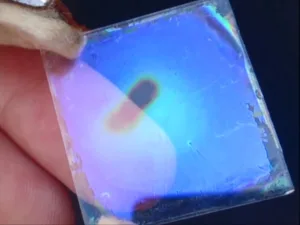A team from Stuttgart’s Max Planck Institute for Solid State Research and LMU Munich has developed materials for ‘touchless’ touch control.
In a nutshell, the electrical and optical properties the materials used change when a finger comes near, due to a sensor that reacts to sweat on human skin. The sensor uses phosphatoantimonic acid, which is a crystalline solid at room temperature. It has a structure made of antimony, phosphorous, oxygen and hydrogen atoms. The sensor reacts “in a very local manner” to an increase in moisture (such as sweat), said doctoral student Pirmin Ganter.
Phosphatoantimonate nanosheets were used to develop a photonic nanostructure, which reacts to moisture by changing colour. Katalin Szendrei, another doctoral student, said, “If this was built into a monitor, the users would then receive visible feedback to their finger motion”.
A multilayer sandwich material was constructed, with more than 10 layers – although was still less than 0.1mm thick. It was built with alternating layers of ultrathin phosphatoantimonate nanosheets, and silicon dioxide (SiO2) or titanium dioxide (TiO2) nanoparticles. The material reacts to a change in humidity ‘within a few milliseconds’.
Interactive displays that do not need to be touched would suffer less mechanical wear, and be less susceptible to transferring bacteria.

